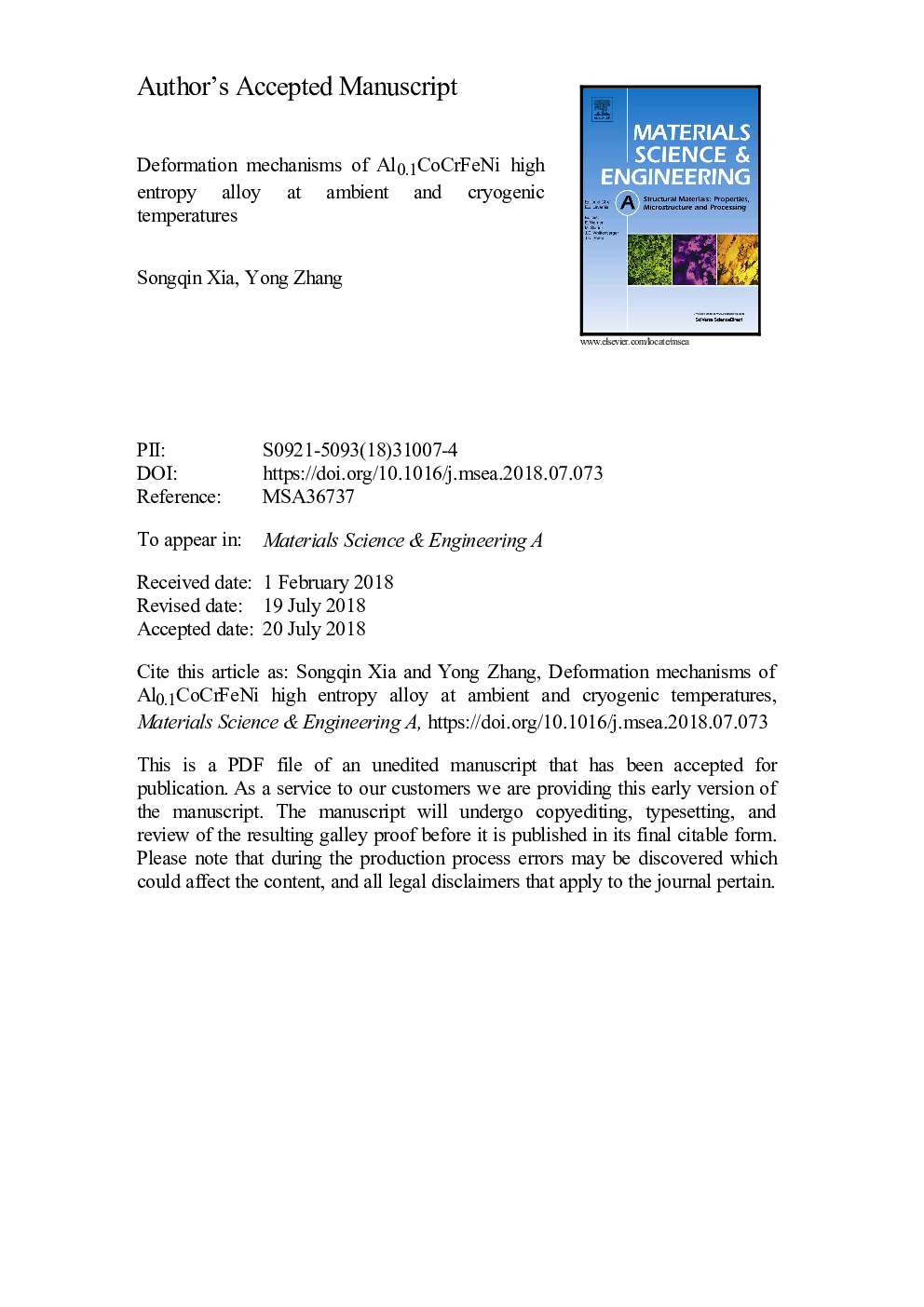| Article ID | Journal | Published Year | Pages | File Type |
|---|---|---|---|---|
| 7971681 | Materials Science and Engineering: A | 2018 | 27 Pages |
Abstract
The deformation mechanisms of an Al0.1CoCrFeNi high entropy alloy (HEA) produced by the vacuum levitation melting (VLM) method were studied in the compression test at temperatures range from 298â¯K to 77â¯K. The nominal yield strength was 120, 168, 275â¯MPa for the alloy tested at 298, 200, and 77â¯K, respectively. Note that all the compression tests were done only up to the ~ 50% plastic strains. In addition, the remarkable strain-hardening ability and the serration phenomena were observed during the deformation of the alloy at 77â¯K. Transmission electron microscopy (TEM) and high-resolution TEM (HRTEM) characterizations revealed that at 298 and 200â¯K, the deformation in the alloy occurs on the normal FCC {111}<â¯110â¯>â¯slip systems by planar dislocation glide. In contrast, at 77â¯K, nano-twinning becomes an additional deformation mechanism. Overall, the significant increase in the nominal yield strength, extensive strain-hardening ability, and the serration phenomena are attributed to the capability of extensive nano-twinnings at 77â¯K.
Related Topics
Physical Sciences and Engineering
Materials Science
Materials Science (General)
Authors
Songqin Xia, Yong Zhang,
